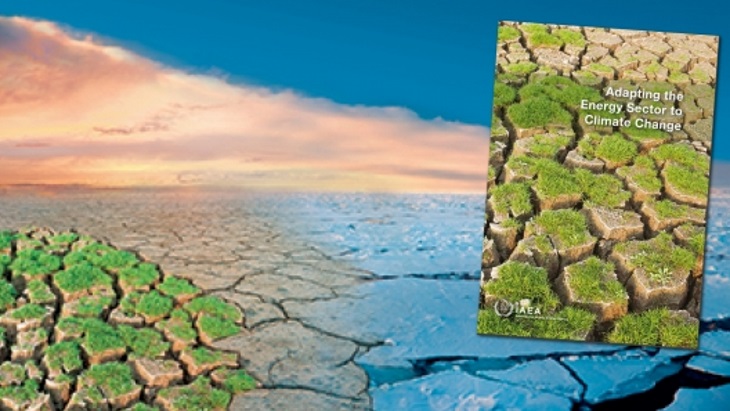Published this week, Adapting the Energy Sector to Climate Change explores the diverse range of impacts on the energy sector resulting from gradual climate change and extreme weather events (EWEs), and the potential ways to counter them. The report considers the effect of EWEs on nuclear power, thermal power, renewable energy technologies, and electricity grids.
The most significant impacts of global climate change on nuclear power plants, it says, are the degradation of thermal efficiency and the volume and temperature of water in adjacent water bodies affecting cooling water availability. Alternative cooling options are available or increasingly considered to deal with water deficiency, ranging from reusing wastewater and recovering evaporated water to installing dry cooling, it adds.
"Nuclear power plants are built to withstand EWEs on the basis of past experience, typically the worst expected event at the plant site over a 50 or 100 year period or much longer, such as 500-year floods. However, as climate changes, past events are becoming an increasingly inappropriate basis for the prediction of the severity of future events," the report says.
"Existing nuclear power plants may become vulnerable to EWEs, and the siting and design of future nuclear power plants need to account for a changing climate. Nuclear plants are exposed to an additional level of vulnerability beyond those that other types of generating plant face. Various types of EWE can affect critical safety systems and increase the risk to human health and the environment, making adaptation more than an economic calculus for plant owners. Ensuring that external events do not lead to safety system failures is the highest priority for adaptation to EWEs," it adds.
Many acute safety threats from EWEs can be minimised by shutting down nuclear reactors until an event has passed, but this strategy leads to increasing outages as climate change and EWEs become increasingly unfavourable, it says, adding that a shutdown state during an EWE "may not be the safe state".
"Adapting plants so that reactor shutdowns become less frequent would minimise outages as well as avoid costly plant-related damages that would have occurred without plant adaptation. Although the accident at the Fukushima Daiichi nuclear power plant was caused by a tsunami, which is unrelated to climate change, this tragic event underscores the vulnerability of nuclear power plants to extreme flooding. In the aftermath of the Fukushima Daiichi accident, the nuclear power industry and its regulators reassessed nuclear plant safety against extreme natural hazards, including flooding, wind, ice storms and extreme temperatures," it says.
The IAEA officer responsible for the publication is Loreta Stankeviciute, an IAEA energy systems analyst in the Division of Planning, Information and Knowledge Management.





_18570.jpg)
_18938.jpg)
_33584.jpg)
_82983.jpg)





